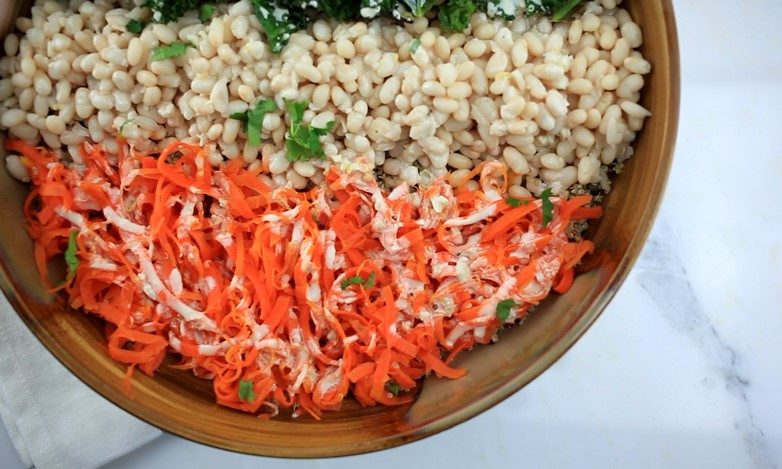Enlighten Your Clients with These Nutrition Tips

This year’s Nutrition Month theme is how food nourishes our bodies and our lives. It’s the perfect time to address your clients’ questions about nutrition and help them make lasting dietary changes for optimal well-being. Here are six tips you can share this month.
1.Include fish, meat, dairy and eggs in your plant-based eating
The buzz about plant-based eating may have your clients wondering if and how animal proteins fit in. Plant-based eating means mostly plants, not only plants. From fish and beef to beans and walnuts, protein foods have vastly different combinations of nutrients. And for your clients who are interested in maintaining a healthy body weight, there is no denying that animal proteins offer a concentrated source of many nutrients, all for a modest number of calories.
TIP: For optimal health, choose a wide variety of whole and minimally processed plant and animal proteins.
2.Understand the untold story about pesticides
Our food has never been safer, yet Canadians have never been more worried about food safety. All pesticides used in Canada must pass rigorous tests for human and environmental safety. Pesticides keep our fresh produce abundant and affordable, too. Thanks to the option to use pesticides, Canadian farmers can grow 83% more vegetables and 72% more fruit. It’s estimated that fresh fruits and veggies would cost us 50% more without the use of pesticides.
TIP: The research on the benefits of eating enough vegetables and fruit is solid, and there is no need to limit produce consumption based on concerns about pesticides. Focus on filling half your plate with veggies and fruit.
3.Watch for more plant science innovations, such as the non-browning apple
Earth’s population is expected to reach nine billion by the year 2050, and scientists are working to meet the growing demand for food. Here’s just one example of an innovation that reduces food wastage: non-browning apples.
Some 40% of apples go to waste because of browning. Scientists have found a way to turn off the apple gene that promotes browning, so that when we bite or slice into the fruit and expose its flesh to air, it won’t change colour. This modification doesn’t affect how the apples grow or taste, nor does it alter their nutrition profile.
TIP: Non-browning apples are widely enjoyed in the United States. They have also been approved in Canada, but are not available yet. Expect to see this and other plant science innovations in the years to come.
4.Fill half your plate with vegetables and fruit for EACH meal and snack
Yes, that includes breakfast, but if morning workouts leave less time to eat, people can:
- Pack a bag of raw veggies to munch on later. Keep it simple: grape tomatoes, baby carrots and sugar snap peas.
- Freeze single-serving portions of their favourite fruit-veggie smoothie blend for a quick hit of nutrition before a workout.
- Fill a pita with a slice of leftover veggie frittata and grated carrots.
TIP: Place a few pieces of fruit in a bowl by the front door. Research shows that if people see a food, they are more likely to eat it.
5.Don’t be duped by the “Non-GMO Project Verified” logo
There is no such thing as a GMO orange, but that does not stop marketers from using the “Non-GMO Project Verified” logo on packaging for orange juice and other food products like crackers and avocado oil. Not only is this practice misleading, but it instills concerns that GMOs (genetically modified organisms) should be avoided.
TIP: Scientists with regulatory groups such as the World Health Organization, the Food and Agricultural Organization of the United Nations, Health Canada, the American Medical Association, and others have reviewed hundreds of studies and determined there is no evidence that GMOs pose a risk to human health or the environment.
6.Replace ultra-processed foods with whole and minimally processed foods
If there is one food and nutrition concern that’s worth worrying about, this may be it!
Consider this: 50% of calories in the Canadian diet come from ultra-processed foods like pop, muffins, pizza, hot dogs, and chips. We have essentially replaced wholesome, naturally nourishing foods like vegetables, fruits, whole grains, beef, pulses, and fish with foods that are high in calories and low in nutrients.
TIP: Fill half your plate with veggies, ¼ with whole grains and ¼ with quality protein. Visit Half Your Plate for ideas and recipes. Check out this Carrot Kale Quinoa Power Bowl with Lemon Tahini Dressing.

